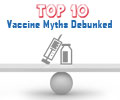A professor of microbiology and immunology has developed two new proteins that may enhance the production of antibodies against many infectious agents.
A University of Buffalo professor of microbiology and immunology has developed two new proteins that may enhance the production of antibodies against many infectious agents.
Terry D. Connell, Ph.D., professor of microbiology and immunology in the Witebsky Center for Microbial Pathogenesis in the UB School of Medicine and Biomedical Sciences, developed and patented the LT-IIa and LT-IIb enterotoxins and their respective mutant proteins as new mucosal adjuvants, or "boosters," that can enhance the potency of existing and future vaccines.At present, the researchers are working to develop a safe and effective method to deliver the immune-enhancing molecules to the body's mucous membranes, which is the first line of defense against most pathogens, in order to elicit protective immune responses on those membranes.
"Almost every bacterium and virus that attacks us doesn't bore through the skin. These infectious agents enter by colonizing the mucosal surfaces on the eye, sinuses, mouth, gut lining, lungs and genital tract," said Connell.
Until now, the researchers have used mouse model and found out that the nasal passage is the best mucosal surface on which to apply LT-IIa and LT-IIb as mucosal adjuvants.
Their research showed that by mixing a very small amount of LT-IIa or LT-IIb with an existing antigen and dripping the mixture into a mouse's nose will produce a strong antigen-specific immune response in the nasal passages, as well as in saliva, the urogenital tract and the bloodstream.
On the contrary, immunizing the mouse with only the antigen generates a much lower level antigen-specific immune response at those sites. Connell said that this method of application is mainly suited to immunizing populations in underserved areas.
Advertisement
LT-IIa and LT -IIb are similar to cholera toxin in 3-dimentional structure and toxic activity. Yet, the amino-acid sequences of the binding subunits of LT-IIa and LT-IIb are significantly different from the amino-acid sequence of the binding subunit of cholera toxin. These amino acid differences underlie the specificity of LT-IIa and LT-IIb for ganglioside receptors, which are different from the ganglioside bound by cholera toxin. [A ganglioside is a complex molecule that contains both lipids and carbohydrates and is found in the outer membrane of many kinds of cells.]
Advertisement
"Basically, LT-IIa and LT-IIb are molecules you can add to any vaccine candidate to augment the immune response to that protein, whatever it may be," stated Connell.
Source-ANI
SRM/L









